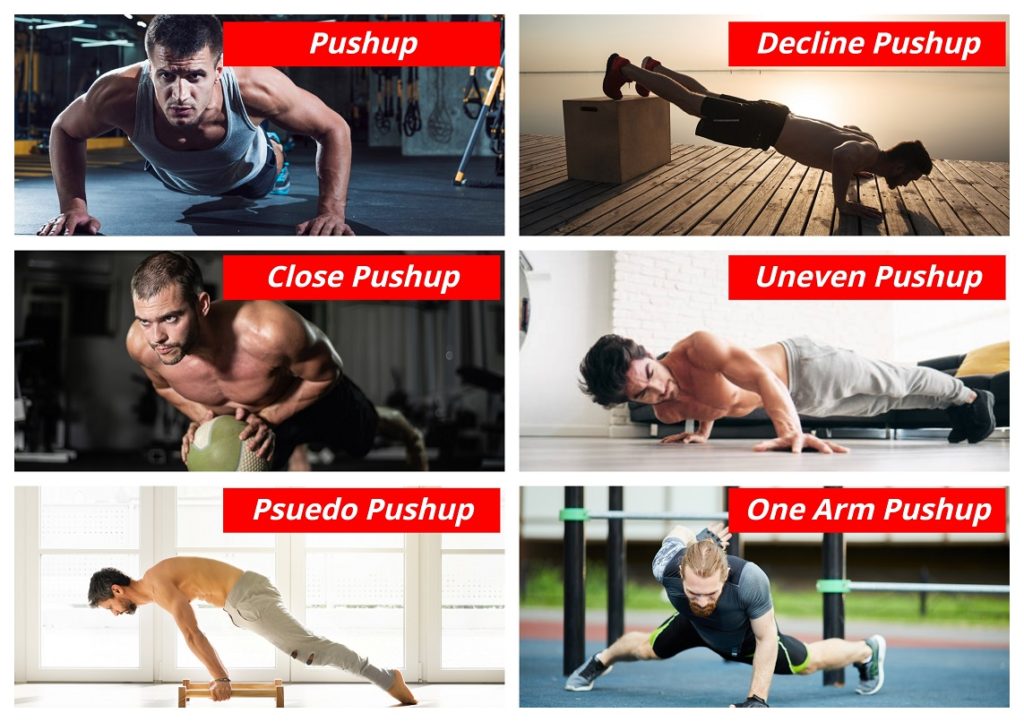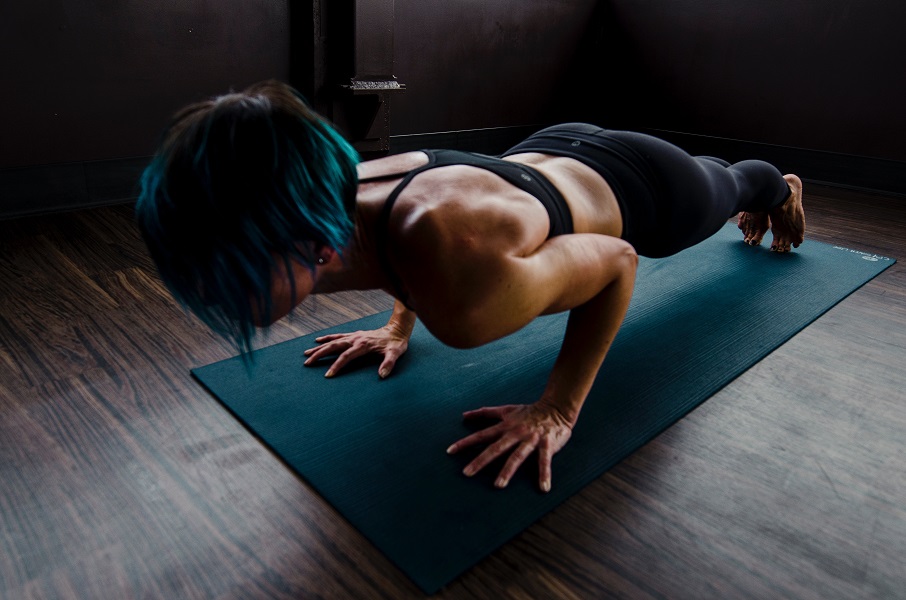Disclosure: This post contains affiliate links. Meaning if you click on a link and make a purchase, I'll earn a small commission at no extra cost to you.
If you’d have asked me for my favorite exercise a few months ago out of dips vs pushups. I’d probably have said dips every day of the week.
But back then, most of my calisthenics workouts used to consist of nothing more than pullups, dips, and squats, with pushups usually being an afterthought. Or just something that I used as a quick finisher to end my workout.
Recently though, I started digging a little deeper into calisthenics.
Turns out, the level of strength and skill you can get from mastering these two simple moves (and their progressions) is more than enough to keep you busy in the gym for years.
The problem, however, is that most people only stick to the regular version of the dip and pushup.
And if you fall into this way of training, you’re not going to make the progress you want in either of these exercises.
So what can you do?
Well, you could just do more sets and reps and hope you get the results you want.
But in my experience, this rarely works. Sure, you’ll get a quick pump, but the strength, skill, and fitness level you can achieve from a structured calisthenics program is far more likely to get you better results in less time.
In fact, if you want a program that gives you an all-access pass to every progression of every calisthenics exercise known to man…
…Including dips and pushups.
Then I recommend taking a look at the Bar Brother System below.
WATCH VIDEO: How To QUICKLY Master The Planche, Muscle-Up, Human Flag, And Other Advanced Calisthenic Moves That Defy The Law Of Gravity
(Video Will Open In A New Window)
Anyway…
Before I get too far off track, today I thought I’d share my own personal insight into dips, and their arch-nemesis the pushup.
Once you’re done, you’ll understand why both are critical to your success and development.
Let’s get started…
Table of Contents
The Basics Of Dips Vs Pushups
What Are Pushups?
Now for 99.9% of you reading this. I probably don’t have to explain what a pushup is.
It’s probably one of the most (if not the most) widely recognized exercises on the planet.
But if your one of the select few who’s never seen a pushup in action. Here’s a brief description of what the whole thing entails.
A pushup is a horizontal upper body pressing movement. It’s a simple resistance exercise that (when used correctly) can increase your strength, endurance, and fitness levels.
Provided you practice it often enough.

The process is pretty straightforward. You simply hold yourself parallel to the floor with your arms straight and your feet on the ground.
To perform a pushup. Just bend your elbows while keeping your back straight until your chest is a few inches from the ground.
Hold for a brief second before pushing yourself back up to the starting position.
That’s one rep.
What Are Dips?

The dip is another great upper body pressing movement that works a little differently to a pushup.
Because now, you’re supporting the full weight of your body on a set of parallel bars and pushing yourself vertically.
It’s a lesser-known exercise that (in my opinion) is hugely underrated.
But if you add them into your workouts like I’m going to show you.
You’ll wonder why you didn’t start doing them sooner.
Dips Vs Pushups – Muscles Worked
Now in their most basic form. Both parallel bar dips and pushups work pretty much all the same muscles.
They work…
- The chest
- Triceps
- Anterior deltoids (front shoulder)
And they both require some degree of core activation and stabilization.
So on the surface, you should just pick your favorite and go with it, right?
Not so fast.
Even though they’re similar. There’s one apparent difference that makes both exercises different when it comes to upper body pressing movements.
And that’s the strength you need to execute them.
See pushups are a lot easier because your feet are grounded.
This means that you’ve got less weight to contend with. Making the execution of the push up a lot less taxing on your muscles.
But dips require you to support the whole weight of your body while being suspended off the ground.
This makes it a lot more challenging to work through the movement because essentially, you’re pushing twice as much weight as the pushup.
So if you’re not the best at pushups. It’s doubtful you’ll be anywhere near ready for dips.
Dips Vs Pushups – Progressions
In terms of progression, there are probably dozens more pushup progressions you can do compared to dips.
This doesn’t mean dips are limiting by any means.
In fact, once you’re strong enough, you can start adding all sorts of crazy elements to dips like transitioning between multiple exercises…
…Combining them with different isometric holds such as the l-sit
…Or even adding core exercises between reps such as leg raises.
The options are limitless is you’re willing to think outside the box.
I’ll get into this a bit later in the post, but for now, I’ll just list the more basic variations of each so that you can compare the two.
Dip Progressions
As far as dips go, the standard progressions look like this…
- Bench dips
- Parallel Bar Dips
- Straight Bar Dips
- Ring Dips

There are plenty more micro progressions you could throw into the mix.
For example, changing your grip, distributing your weight, or even adding resistance in the form of a weighted vest, resistance bands, or a dip belt will do the trick.
But these are the base from where most of your dip progressions will come from.
Pushup Progressions
With pushups, you can get a little more creative. Here’s several pushup progressions in their most basic form.
- Pushups
- Decline Pushups
- Close Grip Pushups
- Uneven/Archer Pushups
- Psuedo Pushups
- One-Arm Pushups

Again, there’s a lot of things you can add to these to target your muscles from different angles and make the exercise more challenging.
The critical thing to remember here is that it’s all about variety.
No single variation will tick all the boxes, so you need to get into the mindset of changing things up as often as you can.
The key to making any progress with dips and pushups is to make it challenging.
Simple things like progressively overloading your muscles…
…Or changing up the reps, sets, and rest periods are all great ways to make progress and force your body to adapt.
It’s just a case of how…
Which Is Better? Dips Or Pushups

Whenever someone asks me this question, my initial response is always the same.
Better for what exactly?
Now there’s no right or wrong exercise here. But what you choose to do more of will ultimately come down to one or more of these three things.
- Your goals
- Any limitations you have.
- And what you enjoy
If your goal is strength, then dips are optimal because they tend to be harder than the standard pushup.
And strapping 100 lbs to a dip belt and repping out parallel bar dips is a much simpler alternative than spending months learning how to do a one-arm pushup.
If it’s endurance you want, you’re far more likely to hit more repetitions with the pushup compared to dips.
So in this scenario, pushups would be the obvious choice.
But as I’ve already said, variety is the key to progression and if you want to get results fast. A specific approach is best.
That’s why I always recommend the Bar Brother System to anyone looking to get in peak physical condition with calisthenics.
Because if you can learn to master your body weight the way you’re supposed to. Then there’s no limit to what you can achieve with dips, pushups, or any other advanced calisthenics exercises.
WATCH VIDEO: How To QUICKLY Master The Planche, Muscle-Up, Human Flag, And Other Advanced Calisthenic Moves That Defy The Law Of Gravity
(Video Will Open In A New Window)
Which One Should You Do? – Dips Or Pushups
Short answer…
Just do both.
Each one has it’s own set of benefits that outmatch the other in more ways than one.
Pushups are great for variety and repping out quick finishers.
Dips are awesome for strength and can help you build a big chest and triceps.
If you prefer one exercise over the other, then, by all means, make it a priority.
But for maximum benefit, and to make sure you’re targeting all your muscles from every possible angle.
Both exercises are a must.
Creating An Effective Workout

Now, whenever I create a new workout routine. For me, it always has to…
- Be as time-efficient as possible.
- Work the targeted muscles from multiple angles.
- Get the most work out of each muscle group.
- Be challenging
So with this in mind, I always like to add either dropsets of supersets into my workout.
Dropsets
A dropset is when you perform a specific exercise and gradually decrease the weight as you get tired.
So, for instance, if you were to a drop set with dumbbell bicep curls.
You’d simply grab a heavy dumbbell and keep doing reps until failure.
Then, you’d grab a lighter dumbbell and continue repping out again until failure. Gradually decreasing the weight every time you can’t do any more reps at that particular weight.
It’s a training method that commonly used in weight lifting. But it’s easily adaptable to calisthenics exercises like dips and pushups.
For example, I could do a set of pseudo pushups…
…Followed by a set of archer pushups
…Followed by a set of close grip pushups
…And then finish up with a set of standard pushups.
This way, I’m gradually regressing to easier pushup variations as I get tired. I’m also working my chest from multiple angles because I’m constantly changing the progression.
Supersets
A superset is where you perform two exercises back to back with little to no rest.
Now there are a lot of ways you can add these into your workout. But personally, I like to perform exercises that work opposing muscle groups.
These are called antagonist supersets.
For example, I could perform…
…Pullups followed by parallel bar dips…
…Or
…Pushups followed by inverted rows.
I structure my workouts this way because it helps me meet all the criteria I mentioned above.
Supersets help me save time during my workout making them more time-efficient and challenging.
And dropsets make sure I’m working the targeted muscle from multiple angles because I’m continually changing my hand position and distributing my weight in different ways.
Dips Vs Pushups – Workout Examples
Here’s a few examples of dip and pushup workouts I regularly do to keep myself in check…
Quick Pushup Finisher

This is a quick pushup routine I regularly add to my workouts.
Now it says pushups finisher, but I sometimes put this at the beginning of my routine if I’m doing an endurance-based workout.
So for this one, you’re going to be doing 20 seconds of work followed by 10 seconds of rest for 8 rounds (4 minutes total).
Here’s how it looks…
- 20 seconds of close grip pushups
- 10 seconds of rest
- 20 seconds of wide grip pushups
- 10 seconds of rest
Repeat x4 times for a total of 4 minutes.
This is an adaption of a widely know training format called Tabata.
It’s used mainly for cardio-based exercises like sprints and stuff.
But it works equally as well for resistance exercises like pushups.
Now the idea behind this quick Tabata workout is that you go balls to the wall and give it your best.
But more importantly, don’t stop.
If you physically can’t do any more pushups halfway through the routine. Just get on your knees and continue to rep out until you’ve completed all 4 minutes.
As you get better, your body will adapt to suit.
I’ve actually got to the point where I can alternate between pseudo pushups and uneven pushups for the first 4 rounds.
That’s usually followed up with a few sets of standard pushups or even knee pushups, depending on how exhausted I am towards the end.
Dips Dropset

Now there are two ways I like to do this.
The first way is to start with a hard variation like straight bar dips and then work down accordingly.
Kinda like this…
- Straight bar dips
- Uneven parallel bar dips
- Parallel bar dips
- Bench dips
I’ll then rest 2-3 minutes, then repeat two more times.
Other times I like to focus more on strength and do something like this…
- 100lbs weighted parallel bar dips
- 55lbs weighted parallel bar dips
- parallel bar dips (no weight)
Again, I’ll rest for 2-3 minutes and repeat x2-3 more times
What I do here is add a 55lbs (25kg) plate to my dip belt and then load a backpack up with the remaining 45lbs (20kg) and throw it on my back.
I’ll then do a set of dips…
…Drop the backpack
…Do another set of dips
…Remove the dip belt
And then finish up with an unweighted set of dips until failure.
Doing it this way makes sure I’m not getting too much rest as I work down the weight.
Next time you get a chance, I recommend giving it a go. Obviously, alter the weight to suit your strength level.
Antagonist Superset
As I’ve previously discussed, a superset is where you perform two exercises back to back.
But more specifically, an antagonist superset is where you perform two exercises back to back that target opposing muscle groups.
…Chest and back
…Biceps and triceps
You get the idea.
My absolute favorite antagonist superset is pullups and dips.
Using just these two exercises targets pretty much your entire upper body without any extra input.
And it’s the reason I do them regularly.
Now because both pullups and dips are compound movements (meaning they work multiple muscle groups). I usually add these to the beginning of my workout when I’m at my strongest.
I’ve had times where I’ve left them until the end, and to be honest, they’re not as effective by this point because I’m usually pretty spent.
Wrapping Things Up
Hopefully, this gives you a little more insight into dips vs pushups and why both are essential for your overall development.
I’ve touched on a few basics here. But if you’re looking to take your dips and pushups to the next level. Then I recommend taking a look a the Bar Brothers 12-Week Transformation Program
For $47, you’ll get access to everything you need to turn yourself into an advanced calisthenics warrior.
And what’s more, if you buy the program using This Link, or any other link on this page. I’ll also throw in over $100 worth of training material as a sincere thank you for buying the program.
This includes…
…HIIT to Fit
…Functional Strength
…And Kettlebell Transformation

Now, each of these ebooks sells for anywhere from $27-$47. But they’re yours free when you join Bar Brothers
If you want them, just send me proof (screenshot or receipt) that you joined the Bar Brothers Program using the contact form on this website…
…Or by emailing me at Dan@Un-Ripped.Com.
And I’ll send you all three training guides directly to your email address ASAP.
Anyway, I hope you learned something from this post, and if you have any questions, go ahead and drop my a comment below…

